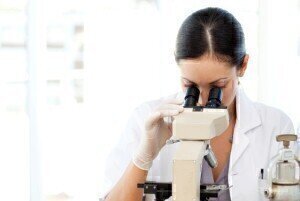News & Views
Bone Cell Breakthrough brings Optimism for Future Therapies
Oct 11 2017
Scientists from the Universities of Glasgow, Strathclyde, the West of Scotland and Galway have for the first time been able to grow three-dimensional samples of mineralised bone in the laboratory, which holds great promise for repair or replacement of damaged sections of bone.
Using a technique known as ‘nanokicking’ the scientists used sophisticated laser interferometer systems, originally built to measure gravitational waves of astrophysical objects, to turn mesenchymal cells taken from human donors into bone cells in three dimensions. The nanokicking process subjects the cells, which are suspended in collagen gels, to ultra-precise, nanoscale vibrations, which turns them into a ‘bone putty’ which carries the potential to heal bone fractures or fill bone. Using patients’ own mesenchymal cells also means surgeons will be able to prevent the problem of rejection and can bridge larger gaps in bone.
Matthew Dalby, professor of cell engineering at the University of Glasgow and one of the lead authors of the paper said: “This is an exciting step forward for nanokicking, and it takes us one step further towards making the technique available for use in medical therapies. We are especially excited by these developments as much of the work we’re doing now is funded by Sir Bobby Charlton’s landmine charity Find a Better Way, which help individuals and communities heal from the devastating impact of landmines and other explosive remnants of war.
“Now that we have advanced the process to the point where it’s readily reproducible and affordable, we will begin our first human trials around three years from now in the NHS along with the Scottish National Blood Transfusion Service and reconstructive and orthopaedic surgeons in Glasgow.”
Find A Better Way CEO Lou McGrath said: “Producing synthetic, off-the-shelf bone tissue will potentially transform the lives of untold numbers of civilian landmine blast survivors around the world. Find A Better Way is delighted to be funding this project - it is a perfect match for Sir Bobby’s dream of devising new solutions for one of the world’s most intractable set of problems.”
The Find A Better Way project at the University of Glasgow is led by professor of bioengineering Manuel Salmeron-Sanchez. In the Find a Better Way project, the team will combine the bone putty with large 3D printed scaffolds to fill even larger bone defects.
Digital Edition
Lab Asia 31.2 April 2024
April 2024
In This Edition Chromatography Articles - Approaches to troubleshooting an SPE method for the analysis of oligonucleotides (pt i) - High-precision liquid flow processes demand full fluidic c...
View all digital editions
Events
Apr 25 2024 Istanbul, Turkey
Apr 28 2024 Montreal, Quebec, Canada
May 05 2024 Seville, Spain
InformEx Zone at CPhl North America
May 07 2024 Pennsylvania, PA, USA
May 14 2024 Oklahoma City, OK, USA


















